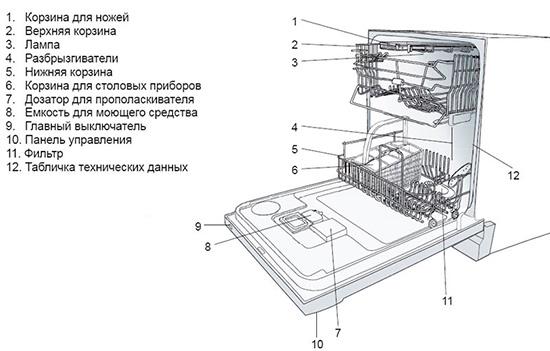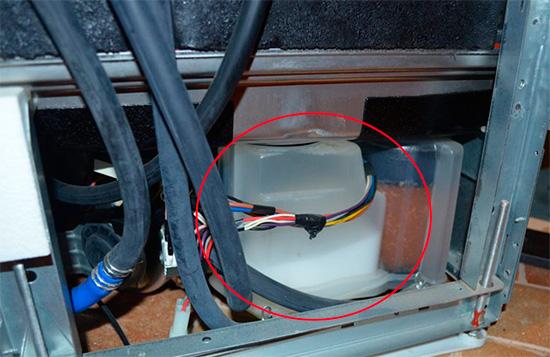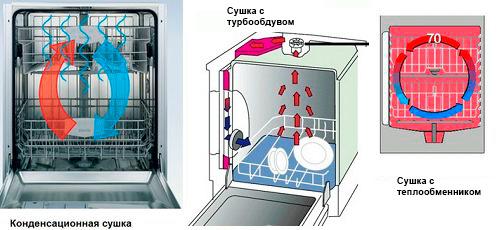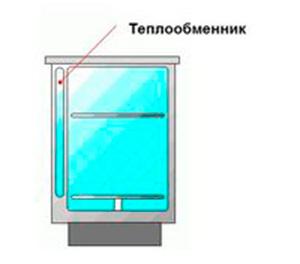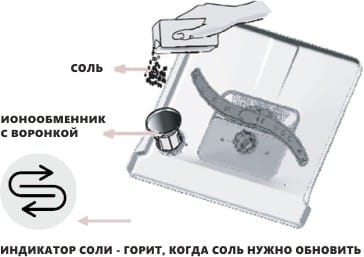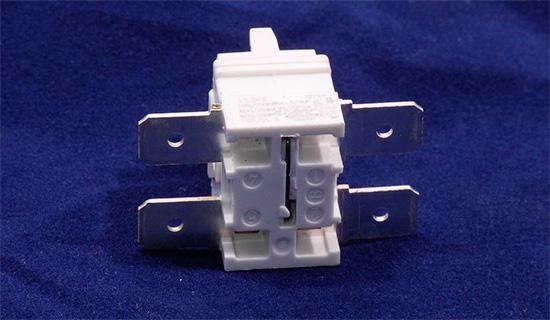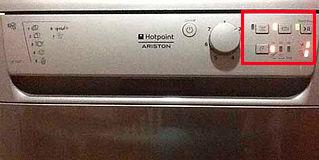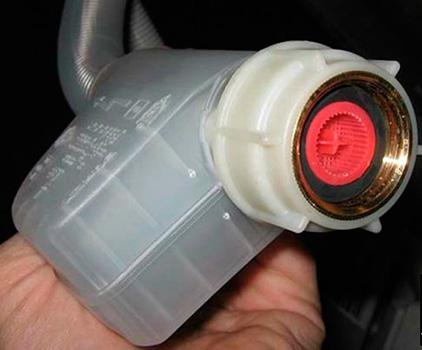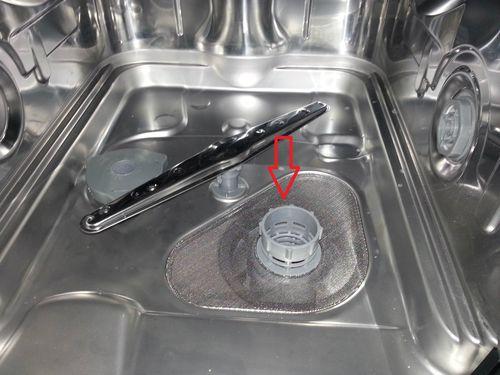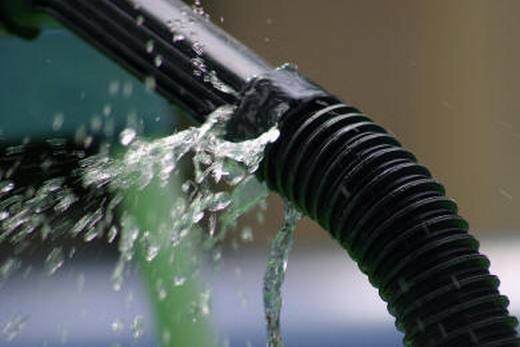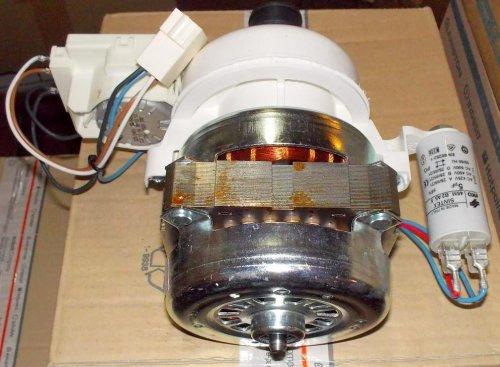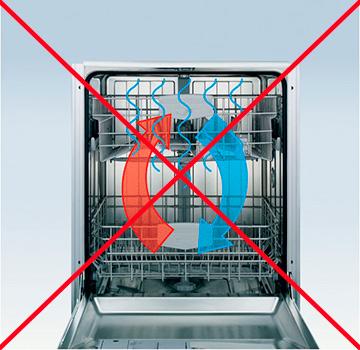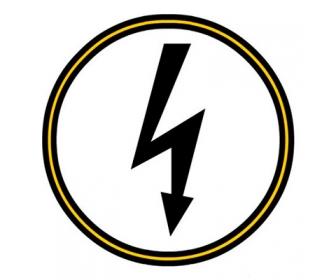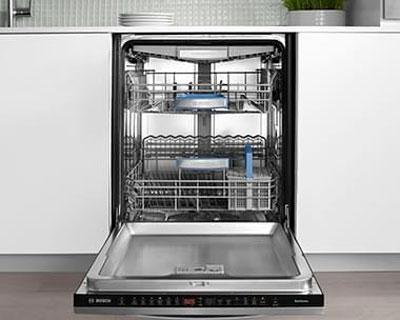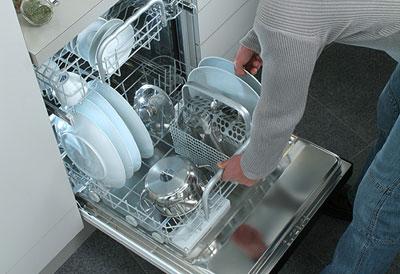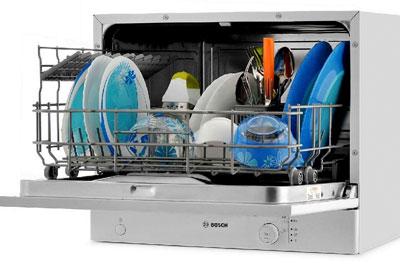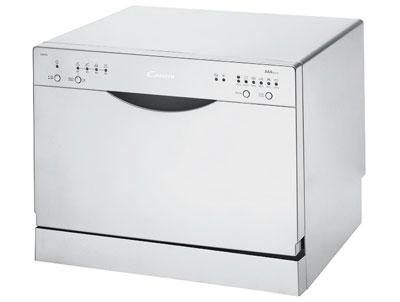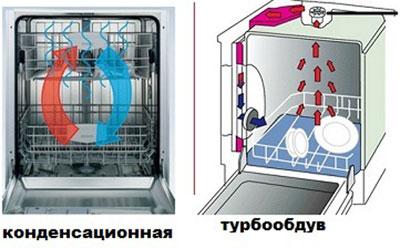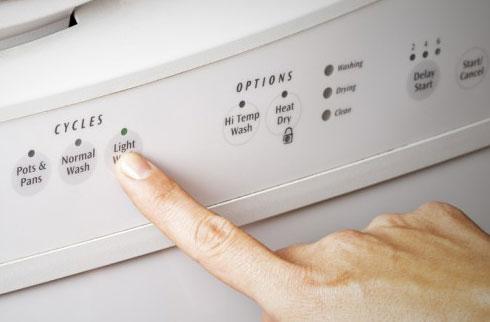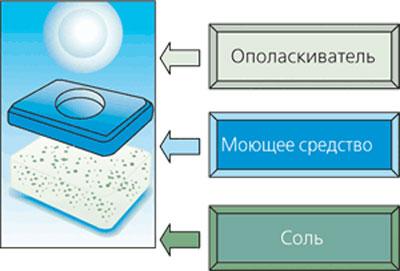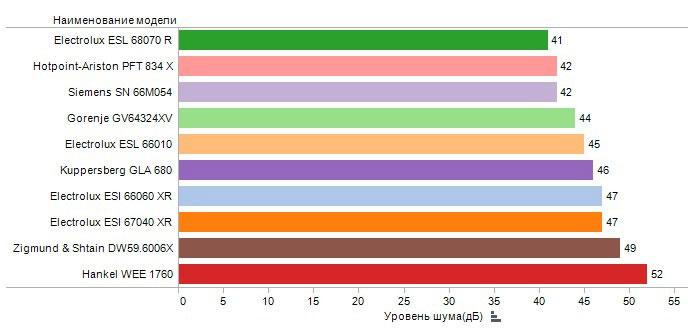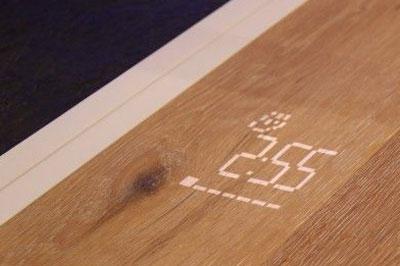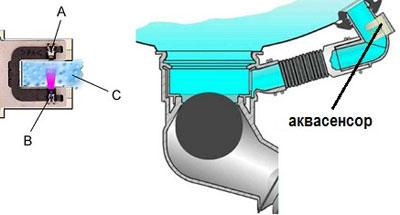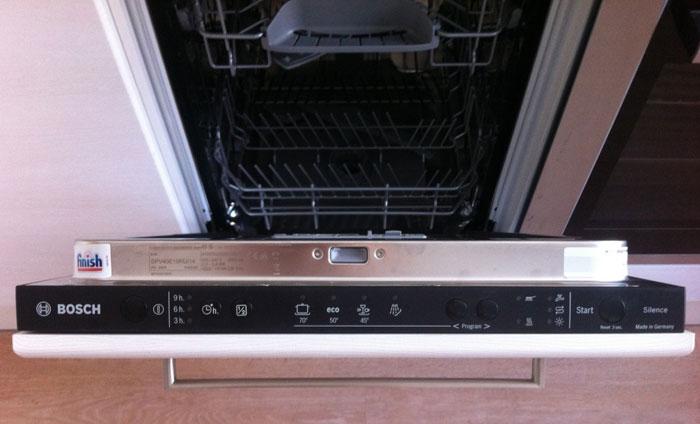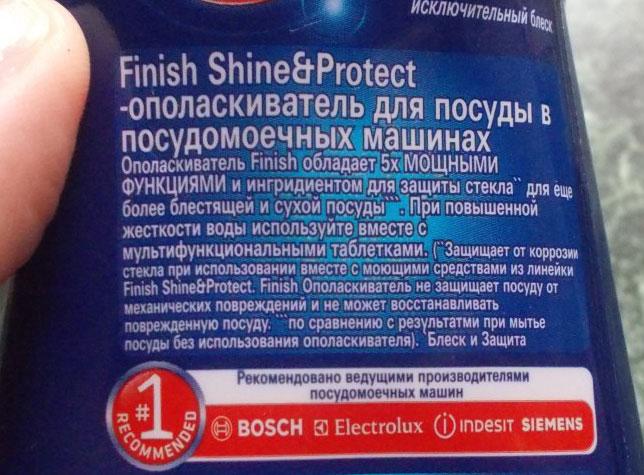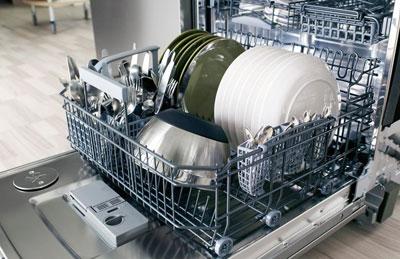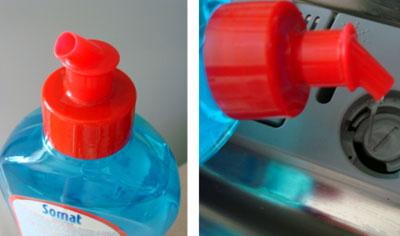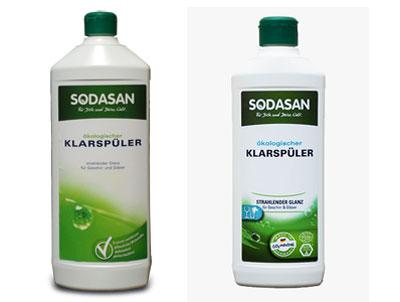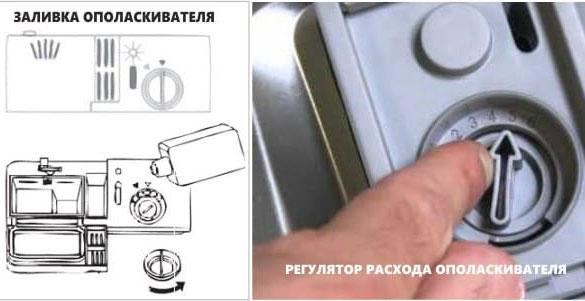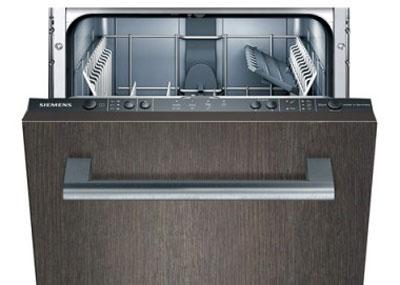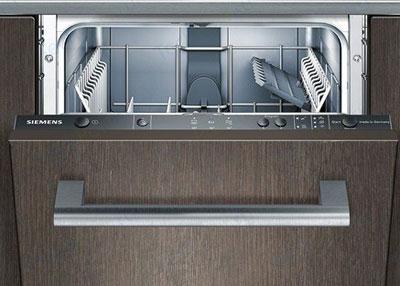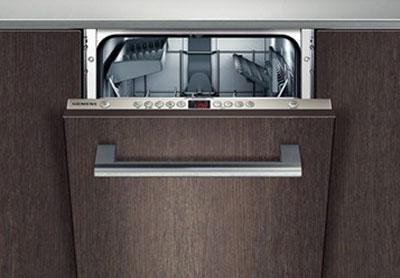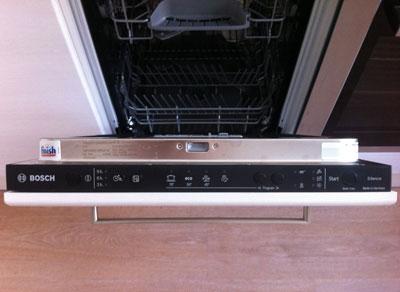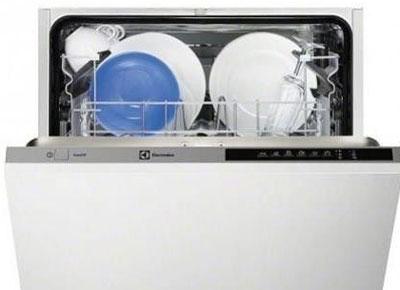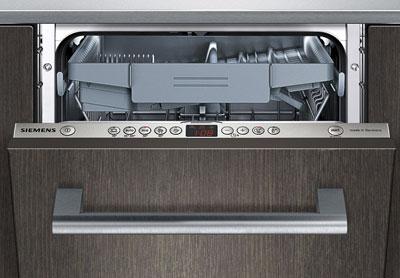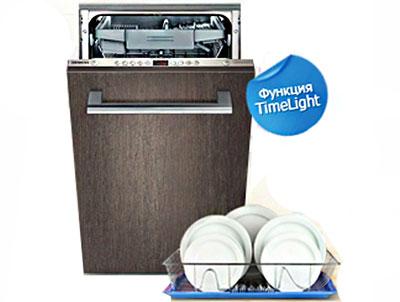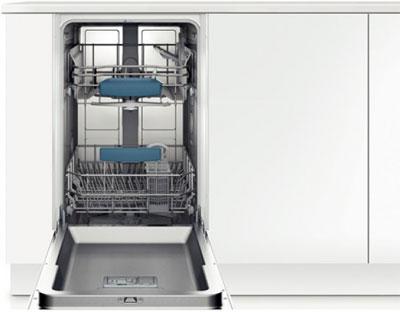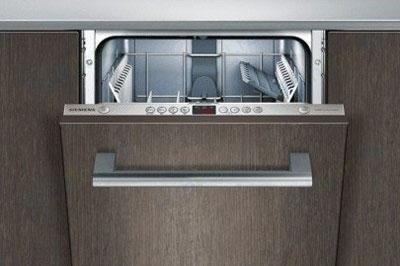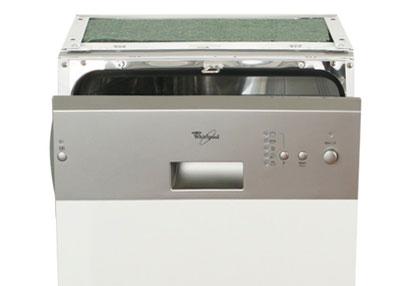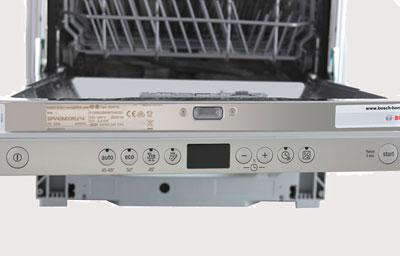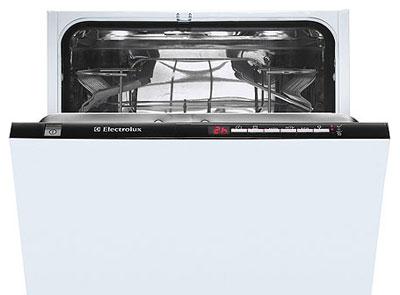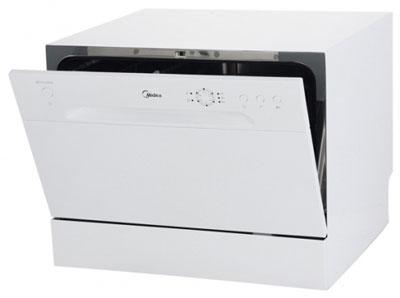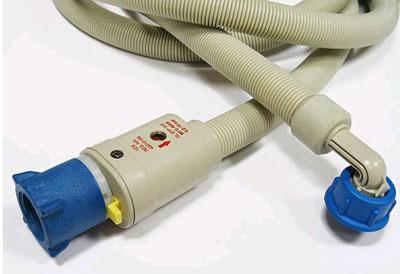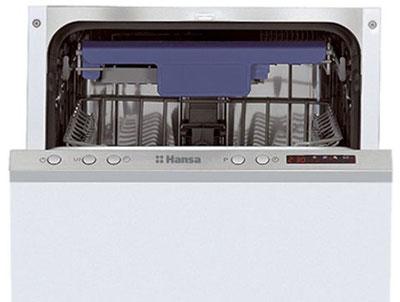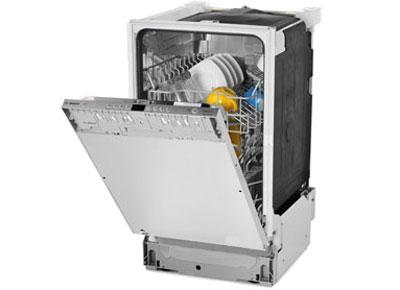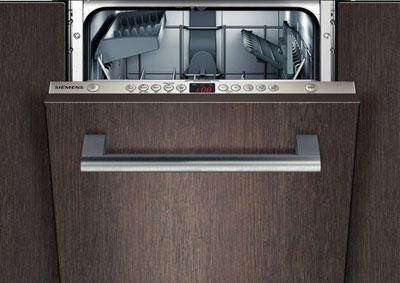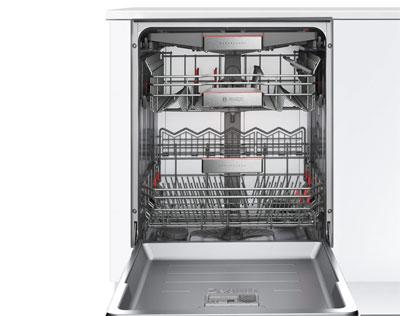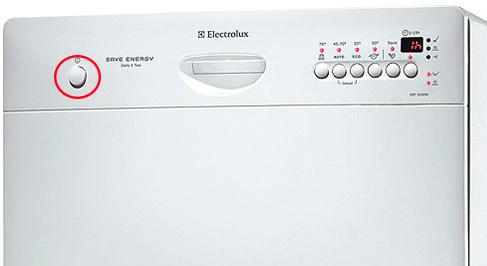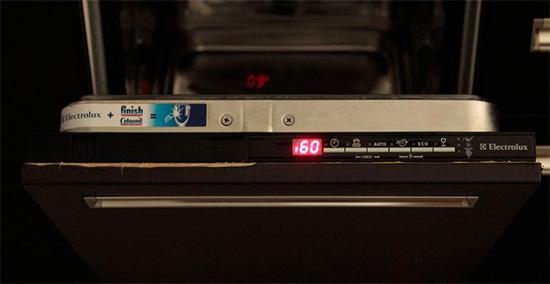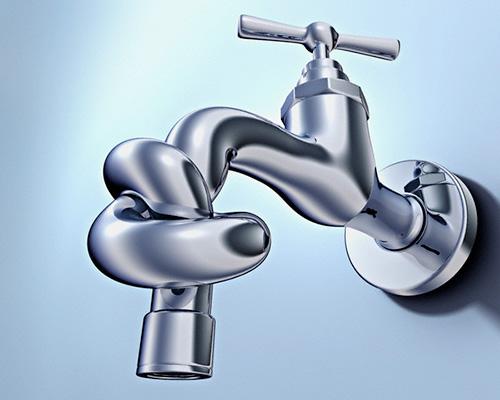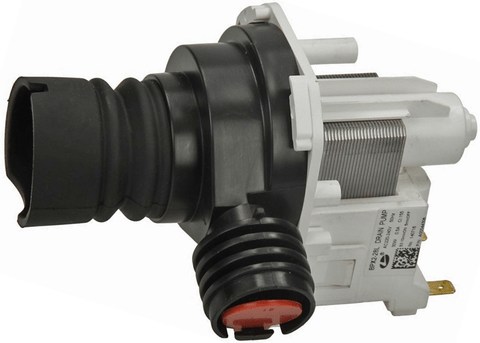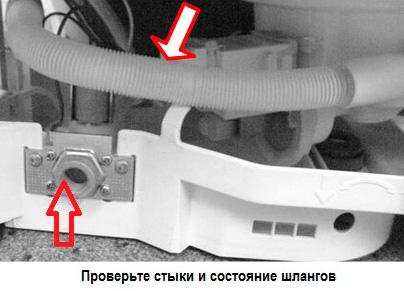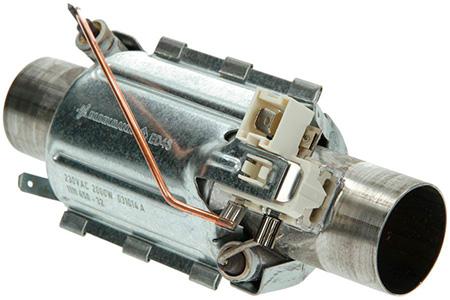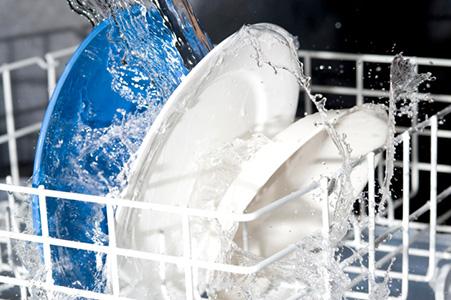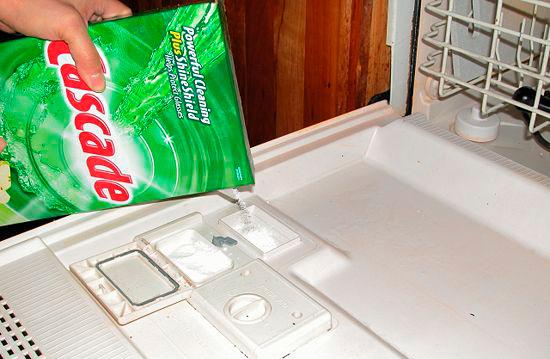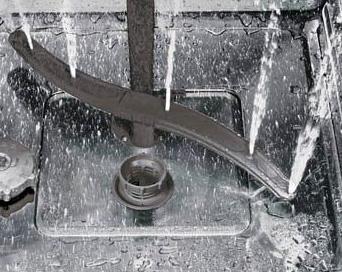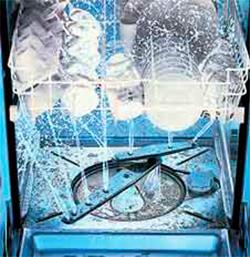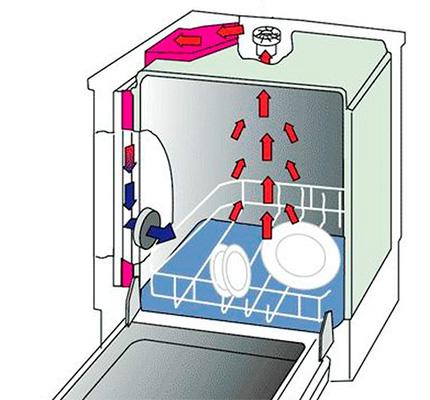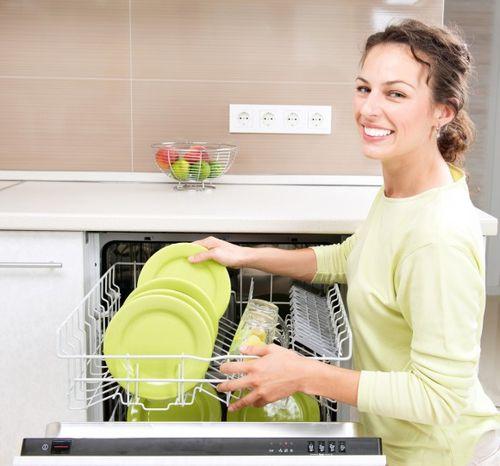If your dishwasher is out of order, do not rush to call the nearest workshop and call a specialist. This technique is quite simple, you can understand its device in a matter of minutes.. Repair of dishwashers such as Miele or Bosch do-it-yourself is not something complicated - almost any man can handle this procedure. Our review will offer tangible help in solving this problem.
Any dishwasher consists of several main components:
- Engine;
- heating element;
- Drain pump;
- Working chamber with rocker arms;
- Control board;
- Inlet valve.
In some models, there are turbo dryers, heat exchangers and some other modules, but in the general case, the structure is just that. Therefore, self-repair of dishwashers is possible without the help of specialists. In addition, you can save a lot of money in your own wallet. Read our review to the end and find out how dishwashers are repaired on their own.
Dishwasher won't turn on
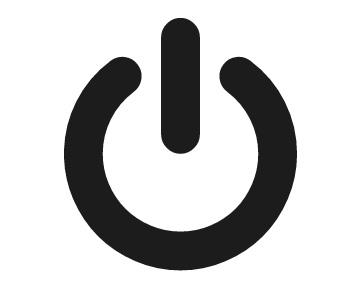
Sometimes the equipment breaks down in such a way that it simply does not show signs of life - the indicators do not light up, programs are not selected, absolutely nothing happens to the dishwasher. Do not be upset about this, as the problem often lies on the surface. For example, a faulty outlet can cause a breakdown - connect some other electrical appliance to it and make sure there is power. If the outlet breaks, replace it and check the condition of the wiring.
If the power is on, but the dishwasher still does not show signs of life, check the fuses on the control board - they may have blown as a result of a power surge. Do-it-yourself repair comes down to a banal replacement of fuses - they can be purchased at specialized stores. But do not try to install "bugs" here, since such an approach often leads to the most unfortunate consequences, up to fires.
Many dishwashers are equipped with mechanical power buttons. They are quite reliable, but sometimes contact groups start to fail - factory defects affect, contacts oxidize and burn from sparking. Eventually, this can cause the button to fail completely. No matter how much you press it, there will be no results. Therefore, after the fuses, feel free to check the switch, it is quite possible that its service life has expired.
Dishwasher won't start washing dishes
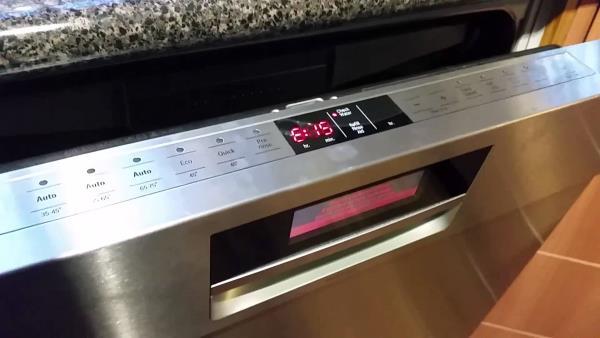
Do-it-yourself dishwasher repair often involves finding faults that are not entirely clear. If the equipment does not show signs of life - this is one thing, but if it turns on and does not begin to execute the program, then this is quite another. The reasons can be very different:
- The door is not tightly closed;
- The circulation pump (aka the engine) has failed;
- The filter is clogged;
- Some sensor is broken.
- Control bogged down.
In the first case, you just need to close the door more tightly - that's the whole repair. Sometimes opening and closing the loading door helps. If the engine fails, then this is a more serious problem. To solve this problem, you should find the same engine - you can look for it in service centers or in specialized online stores selling parts for dishwashers.
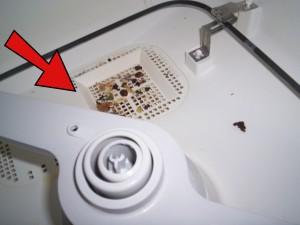
A clogged filter is not the most common cause of failure., and it is eliminated by thorough cleaning, information about how to clean a dishwasher can also be found on our website.If the holes in the rocker arms are clogged, we arm ourselves with a match, an awl or a toothpick, after which we sequentially check the patency of the holes. After that, we try to restart the dishwasher. Also, the reason for the lack of a full start may be a breakdown of the water level sensor - you need to check the resistance of this part.
If the dishwasher does not start to execute the set program, the problem may lie in a faulty control board - it does not turn on the engine, does not open the inlet valve, or does not respond at all to user actions. Do-it-yourself dishwasher repair involves a complete replacement of the board. You can find it in specialized online stores and service centers.
Water does not enter the machine
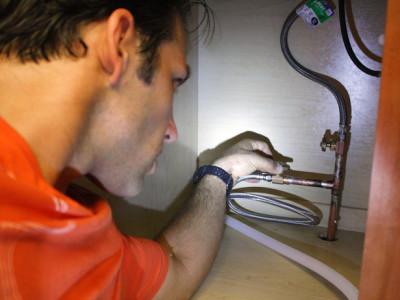
If your dishwasher is not drawing water, and you want to call a dishwasher repairman at home, do not rush to grab the phone - it is quite possible that the cause of the breakdown lies on the surface. First, check the presence of water in the water supply - it could be turned off for the duration of technical work. Also repair comes down to checking the inlet hose and ball valve, which restricts water access to the dishwasher.
The lack of water may be due to a malfunction of the filters. One of them is installed in the inlet hose - it is a thin mesh that traps mechanical impurities. Repair comes down to checking and cleaning this mesh. If an additional coarse filter is installed in the water supply, make sure that it is working.
Another reason why the dishwasher does not fill with water may lie in the inlet solenoid valve not working. Repair steps:
- Checking the valve with an ohmmeter;
- Checking the supply voltage to the valve;
- Ringing wires with a multimeter.
In some cases, the malfunction lies in the control board - here the triac that controls the voltage supply to the valve fails.
The machine does not drain water
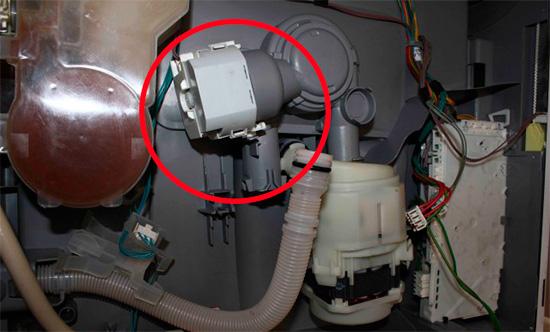
If the dishwasher has stopped draining water, then in most cases do-it-yourself repair comes down to replacing the drain pump - this part fails quite often. For some dishwashers, the cost of this part is very high, but there is no other way out - you need to replace it. We also check:
- The integrity of the wires leading to the drain pump;
- The presence of supply voltage on the pump;
- Drain hose clearance.
Looking for malfunctions of the dishwasher, we again run into banal things. For example, the lack of a normal drain is often caused by a clogged drain hose. Some users manage to transfer this hose, which also leads to a violation of the drain. You should also make sure that the siphon is working properly - it may be clogged.
Testing and repairing a pump comes down to checking the resistance of its winding (find the nominal winding resistance for a specific pump model on the network and compare). If the drain pump is really bad, replace it. If possible, give it to rewind - this will save money on buying it. Also, during the repair process, we check the supply of power at the moment when the drain should begin.
dishwasher leaking
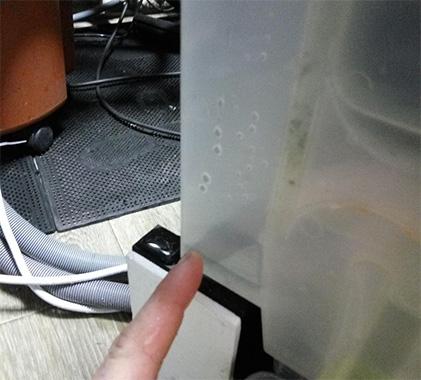
If a whole puddle of water has formed under the dishwasher, it's time to arrange a comprehensive check:
- We examine the loading door seal - it is quite possible that it has served its time and needs to be replaced. Repair comes down to buying a similar seal and replacing it;
- We inspect all available clamps - loosening one of them often leads to leakage;
- We check the integrity of the inlet hose - it could fray or simply leak. We also inspect all seals and change them, as necessary;
- We carefully examine the working chamber - steel is often exposed to through corrosion. Repair consists in restoring the integrity of the tank (for example, by simple soldering).
Most often, the culprits are working chambers and inlet hoses..
Noise in the dishwasher
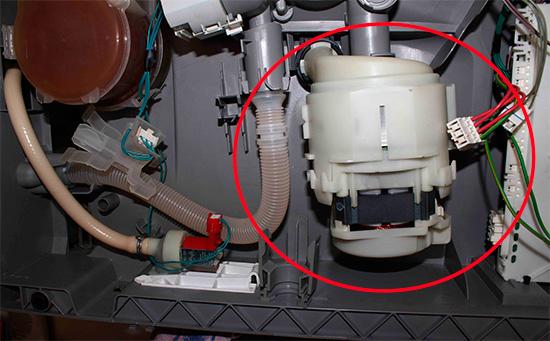
Dishwashers tend to make noise - their sources are flowing water, an engine (aka a pump), as well as a drain pump. Some models are quieter, and some are louder - it all depends on the components used and the soundproofing of the case. If the dishwasher starts to make noise louder than usual, it needs to be repaired:
- We disassemble the equipment and inspect the engine - it is quite possible that bearings are making noise here, into which water has entered through leaky seals. Repair is simple - you need to replace the seals and the bearings themselves. In some cases, the repair process comes down to a complete replacement of the entire engine;
- We check the pump - some pollution could get stuck in it, causing an increase in the noise level;
- We check the rotating rocker arms - maybe they are the noise or the mechanism that sets them in motion.
When repairing dishwashers at home, masters often advise to carry out periodic preventive inspections - they allow you to detect developing malfunctions in time.
Dishwasher does not heat water
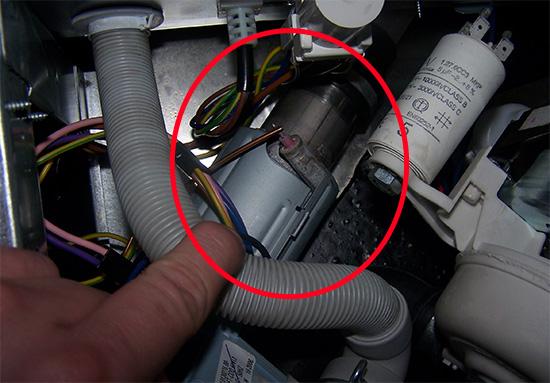
Dishwashers wash dishes in hot water, as washing something in cold water is extremely problematic. The heating element is responsible for heating, classic or flowing. Its failure leads to the fact that the dishwasher stops heating the water - as a result of this, the program may stop and the lack of normal results. Repair consists in replacing the heating element - you need to find a similar part in the service center or in a specialized store. Worst of all, if the dishwasher has a heating element combined with a drain pump.
Other reasons for the lack of heating:
- Faulty internal wiring - repair comes down to ringing the integrity of the wires and replacing them;
- The temperature sensor is faulty - it gives commands to turn off the heating element. Repair consists in replacing the sensor;
- The control board is out of order - it does not supply voltage to the heating element.
Most often, the heater itself fails.
Dishwasher won't dry dishes
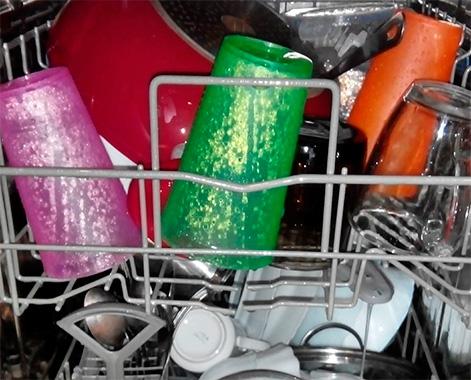
Condensation drying in dishwashers works in such a way that the dishes dry on their own, in a natural way. Evaporating water condenses on the top of the chamber and flows down. In order to improve evaporation, manufacturers raise the temperature of the water during rinsing, thereby heating the dishes. Therefore, the presence of water droplets is the norm (albeit contrary to class A) - repair is not needed in this case.
A turbo dryer works differently - it dries kitchen utensils with hot air. It is generated using a special heating element and fed into the working chamber by a fan. If the machine with a turbo dryer stops drying, then The cause of the failure may be a failed fan. If the fan rotates, but the dishes remain wet, the problem lies in the broken heating element.Repair is simple - you need to replace the faulty module.
Dishwasher is electric
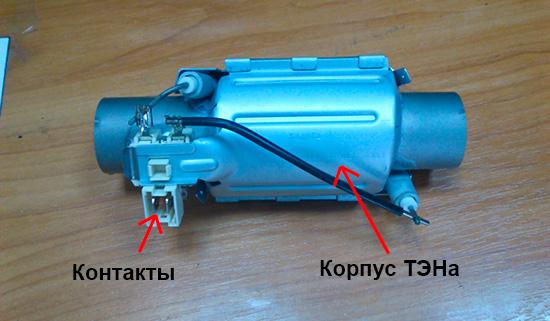
When repairing dishwashers at home, service center masters often hear complaints that dishwashers are electric. The most common cause is a malfunction of the heating element - it must be checked first.. The repair process is reduced to checking the resistance between the body of the heating element and its contacts. If a breakdown is visible on the multimeter readings, the heating element should be replaced.
We also check:
- The integrity of the connecting wires inside the dishwasher - perhaps the insulation has leaked somewhere, partially shorting to the case;
- Dishwasher motor - here there may be a breakdown on the body. Repair is a replacement of the motor or rewinding of the windings;
- Integrity of other electrical components.
Thus, there is nothing difficult in troubleshooting and repairing a household dishwasher with your own hands. Having understood dishwasher, you can carry out repairs yourself, saving money on calling the master.

